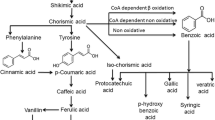Abstract
Current treatment of fibrosarcoma, an aggressive cancer of the connective tissue, is generally associated with poor prognosis. Matrix metalloproteinases (MMPs), vascular endothelial growth factor (VEGF), and constituents of the extracellular matrix (ECM), such as fibronectin, play a critical role in angiogenesis and underlie neoplastic invasion and metastasis. This and anticancer properties of lysine, proline, arginine, ascorbic acid, and green tea extract (NM) prompted us to investigate the effect of these nutrients in vitro on human fibrosarcoma cells HT-1080 by measuring cell proliferation, modulation of MMP-2 and MMP-9, and invasive potential. In vivo, we studied the growth of human fibrosarcoma HT-1080 cells in athymic nude mice and the expression of MMPs and VEGF. Cell proliferation was evaluated by MTT assay, MMP expression by gelatinase zymography, and invasion through Matrigel and migration by scratch assay. Tumors were excised, weighed, and processed for histology in both the control and nutrient-supplemented groups. Results showed NM inhibited the growth and reduced the size of tumors in nude mice; decreased MMP-9 and VEGF secretion was found in the suplemented group tissues. NM inhibited invasion through Matrigel and migration with total inhibition at 1000 μg/mL. These results offer promise in the therapeutic use of the nutrient mixture of lysine, proline, arginine, ascorbic acid, and green tea extract tested in the treatment of fibrosarcoma.
Similar content being viewed by others
References
Papagelopoulos PJ, Galanis EC, Trantafyllidis P, Boscainos PJ, Sim FH, Unni KK. Clinicopathologic features, diagnosis, and treatment of fibrosarcoma of bone. Am J Orthop 2002; 31(5): 253–257.
Ferrari A, Casanova M, Bisogno G, et al. Malignant vascular tumors in children and adolescents: a report from the Italian and German Soft Tissue Sarcoma Cooperative Group. Med Pediatr Oncol 2002; 39(2): 109–114.
Dillon PW, Whalen TV, Azizkhan RG, et al. Neonatal soft tissue sarcomas: the influence of pathology on treatment and survival. Children's Cancer Group Surgical Committee. J Pediatr Surg 1995; 30(7): 1038–1041.
Collin CF, Friedrich C, Godbold J, Hajdu S, Brennan MF. Prognostic factors for local recurrence and survival in patients with localized extremity soft-tissue sarcoma. Semin Surg Oncol 1988; 4(1): 30–37.
(2003, February 12). “Childhood Soft Tissue Sarcoma (PDQ®). Treatment”. National Cancer Institute. http://www.nci.nih.gov/cancerinfo/pdq/treatment/child-soft-tissue-sarcoma/patient (1 Feb. 2004).
Weitz J, Antonescu CR, Brennan MF. Localized extremity soft tissue sarcoma: improved knowledge with unchanged survival over time. J Clin Oncol 2003; 15(14): 2719–2725.
Rath M, Pauling L. Plasmin-induced proteolysis and the role of apoprotein(a), lysine and synthetic analogs. Orthomolecular Medicine 1992; 7: 7–23.
Netke SP, Roomi MW, Ivanov V, Niedzwiecki A, Rath M. A specific combination of ascorbic acid, lysine, proline and epigallocatechin gallate inhibits proliferation and extracellular matrix invasion of various human cancer cell lines. Research Communications in Pharmacology and Toxicology: Emerging Drugs 2003; 2: 37–50.
Roomi MW, Ivanov V, Niedzwiecki A, Rath M. Inhibition of tumor growth of human breast, prostate, colon, melanoma, fibrosarcoma and synovial sarcoma cancer xenografts by nutrient synergy in nude mice. Presented at American Society for Cell Biology Meeting, San Francisco, CA, December, 2003.
Masman TJ, Rapid colorimetric assay for cellular growth and survival: application to proliferation and cytotoxicity assay. J Immunol Methods 1983; 65: 55–57.
Ballin H, Gomez DE, Sinha CC, Throgeirsson UP. Ras oncogene mediated induction of a 92 kDa metalloproteinase, strong correlation with the malignant phenotype. Biochem Biophys Res Commun 1988; 154: 832–838.
Albini A, Iwamoto Y, Kleinman HK, et al. A rapid in vitro assay for quantitating the invasion potential of tumor cells. Cancer Res 1987; 47: 3239–3245.
Fang W, Li H, Kong L, et al. Role of matrix metalloproteinases (MMPs) in tumor invasion and metastasis: serial studies on MMPs and TIMPs. Bejing D Xue Bao 2003; 4: 441–443.
Almholt K, Lund LR, Rygaard J, et al. Reduced metastasis of transgenic mammary cancer in urokinase-deficient mice. Int J Cancer 2005; 113(4): 525–532.
Anthony HM, Schorah J. Severe hypovitaminosis C in lungcancer patients: the utilization of vitamin C in surgical repair and lymphocyte related host resistance. Br J Cancer 1982; 46: 354–367.
Nunez C, Ortiz de Apodaca Y, Ruiz A. Ascorbic acid in the plasma and blood cells of women with breast cancer. The effect of consumption of food with an elevated content of this vitamin. Nutr Hosp 1995; 10: 368–372.
Kurbacher CM, Wagner U, Kolster B, Andreotti PE, Krebs D, Bruckner HW. Ascorbic acid (vitamin C) improves the antineoplastic activity doxorubicin, cisplatin and paclitaxel in human breast carcinoma cells in vitro. Cancer Lett 1996; 103(2): 183–189.
Liu JW, Nagao N, Kageyama K, Miwa N. Antimetastatic and anti-invasive ability of phosphoascorbyl palmitate through intracellular ascorbate enrichment and the resultant antioxidant action. Oncol Res 1999; 11(10): 479–487.
Maeda-Yamamoto M, Kawahara H, Tahara N, Tsuji K, Hara Y, Isemura M. Effects of tea polyphenols on the invasion and matrix metalloproteinases activities of human fibrosarcoma. HT1080 cells. J Agric Food Chem 1999; 47(6): 2350–2354.
Maeda-Yamamoto M, Suzuki N, Sawai Y, et al. Association of suppression of extracellular signal-regulated kinase phosphorylation by epigallocatechin gallate with the reduction of matrix metalloproteinase activities in human fibrosarcoma HT1080 cells. J Agric Food Chem 2003; 51(7): 1858–1863.
Dell'Aica I, Dona M, Sartor L, Pezzato E, Garbisa S. (−)Epigallocatechin-3-gallate directly inhibits MT1-MMP activity, leading to accumulation of nonactivated MMP-2 at the cell surface. Lab Invest 2002; 82(12): 1685–1693.
Author information
Authors and Affiliations
Corresponding author
Rights and permissions
About this article
Cite this article
Waheed Roomi, M., Ivanov, V., Kalinovsky, T. et al. In vivo and in vitro antitumor effect of ascorbic acid, lysine, proline, arginine, and green tea extract on human fibrosarcoma cells HT-1080. Med Oncol 23, 105–112 (2006). https://doi.org/10.1385/MO:23:1:105
Received:
Accepted:
Issue Date:
DOI: https://doi.org/10.1385/MO:23:1:105




